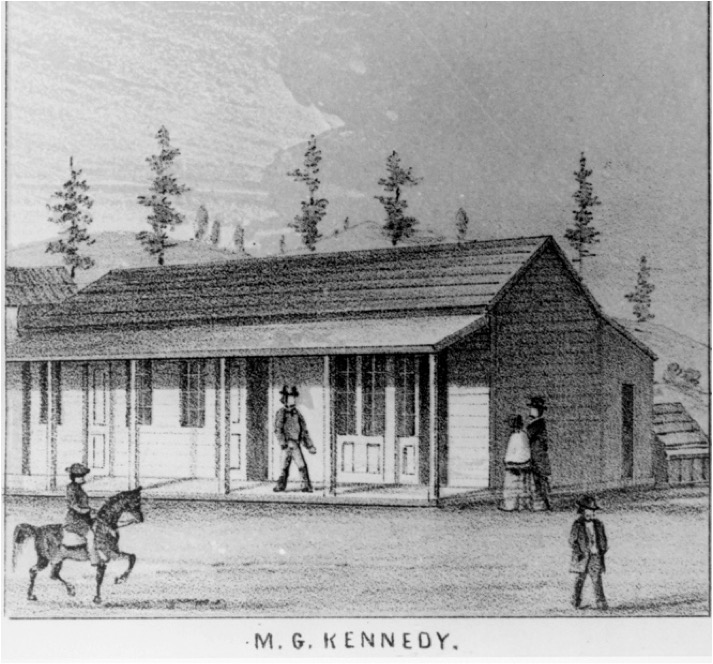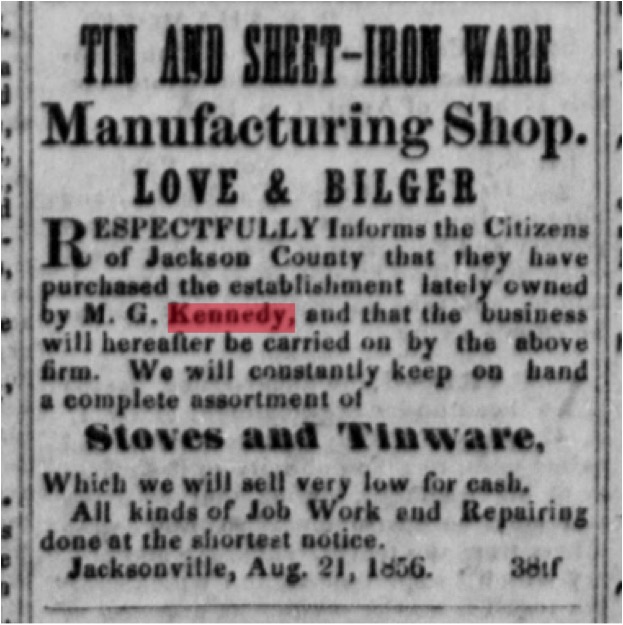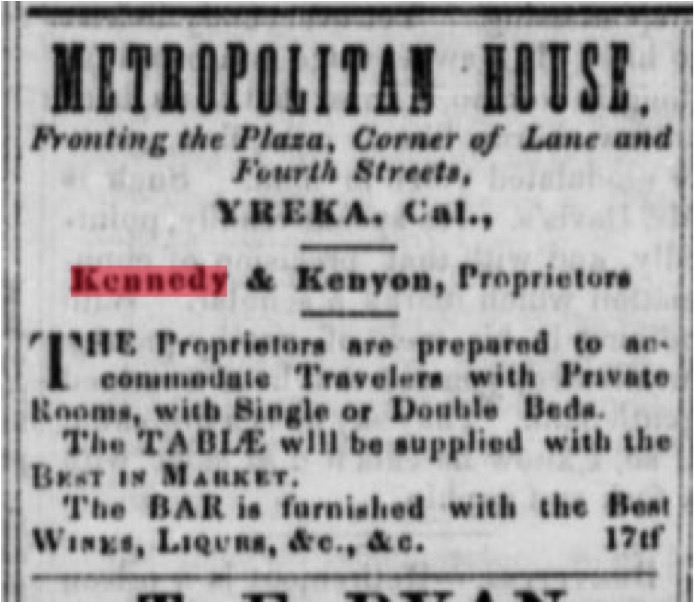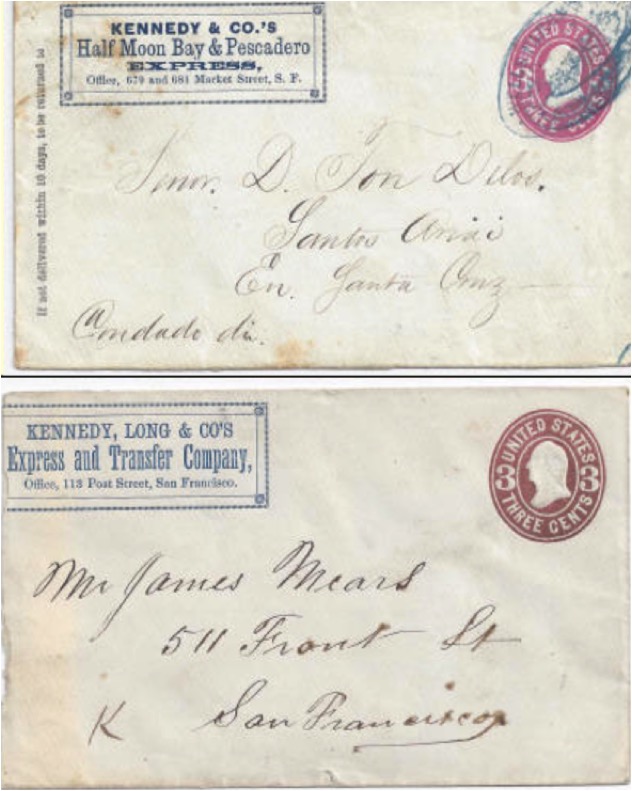|
A Virtual Walk Through Jacksonville History Stop 10: Matthew G. Kennedy House
Let’s turn left now and walk down to the Matthew G. Kennedy House at 240 North Third Street. This is believed to be Jacksonville’s oldest residential structure still in existence. The original portion of the house is believed to have been constructed in 1855, and no later than 1856. The eastern addition was made in the late 1880’s and was used as a summer kitchen. The front porch was likely added at that same time.
Take particular notice of the house’s stacked-stone foundation without mortar, once typical of very early Jacksonville buildings.
The house also has two front doors, which originally led into the separate sections with the front porch serving as a hallway. With so many women dying in childbirth, men would frequently remarry. At the time, it was thought an unlucky omen for a new bride to be brought over the same threshold her deceased predecessor had exited so multiple entries (or exits) became common construction. In the early 1970s, the centuries-old clapboards and unpeeled logs that served as wall studs were discovered under the recently applied asbestos siding. The owner then carefully returned the house to its 1880s appearance. Matthew G. Kennedy, born around 1827 or 1828, arrived in the Rogue Valley in early 1852 as a representative of Dugan’s Express, staking out a donation land claim near “Willow Springs” on Old Stage Road north of Jacksonville. In 1853 a 24-year-old Kennedy became Jacksonville’s town constable. Later that year he became Jackson County’s first elected sheriff, serving a one-year term. [John D. West was the first sheriff, appointed in May of 1852, shortly after the county was formed.] At that time, Jackson County encompassed what is now Jackson, Josephine, Curry, Lake and Coos Counties.
As sheriff, Kennedy would have presided over a number of hangings during the Rogue Indian Wars, such as that ordered for “Indian George” who was tried for murder on January 7 and 8, 1854, and hanged on January 10. Later that year, Kennedy apparently traded his badge for business. A grand jury roll lists his occupation as “merchant.” Kennedy owned and built a group of wood-frame commercial buildings on the northwest corner of California and 3rd Streets known as “Kennedy’s Row,” and used one as his tin shop in the mid-1850’s. Some of Jacksonville’s earliest merchants and tradespeople had their premises there.
In 1855 Kennedy served on a committee to oversee the construction of the first of four Jackson County Jails (Stop #3), and in July of 1856, the County contracted with Kennedy to rent the “Block House” on the lot behind Kennedy’s Row to serve as an interim jail facility. [It’s quite possible that “Block House” refers to Mathew Kennedy’s House.] The County would pay him $100 per month in county warrants providing “Sleepers for the floor [were] laid Solid with Six ring bolts attached to the floor.” Kennedy seems to have chosen not to fulfill the contract. By December he had sold his tin shop to John Love and John Bilger (Stop #7) and soon after headed south to California.
No later than 1858, Kennedy and a man named Kenyon were operating the Metropolitan Hotel in Yreka, California.
Apparently a wanderlust, Kennedy had moved on to San Francisco in the early 1860s and by 1862 he and F.W. Utter had founded Kennedy & Co. Express, offering daily operations from San Francisco to Halfmoon Bay and Pescadero. In 1864, Kennedy added Long as a partner and changed the name to Kennedy, Long & Company, operating under that name until 1866.
Over the years, Kennedy apparently held a variety of occupations, including bookkeeper, baggage and expressman, stockbroker, capitalist, mine investor, and speculator. By the 1870s he had become president and major stockholder of at least two corporations, the San Francisco Transfer Company and the Northern Pacific Coal Mining Company, the latter formed to establish a mining claim between Coos Bay and the Coquille River. Please be sure to join us next week as we continue our virtual walk through Jacksonville History.
Sources/References: The Executive Documents of the Senate of the United States: for the Second Session of the 48th Congress and the Special Session of the Senate Convened March 4, 1885. Vol. 2507, G.P.O., 1888. Pp. 3592-4 Evans, Gail E.H. A Walk Through Time. Meunier, Anna, and Sarah Flora. Growing Oregon. State Historic Preservation Office, and Gail E.H. Evans. State of Oregon Inventory of Historic Properties, 1979. http://truwe.sohs.org/files/jccjournals.html ; http://truwe.sohs.org/files/hangings.html ; http://truwe.sohs.org/files/jccjournals.html http://www.gesswhoto.com/sheriff-jackson.html http://archiveswest.orbiscascade.org/ark:/80444/xv06781
|
|

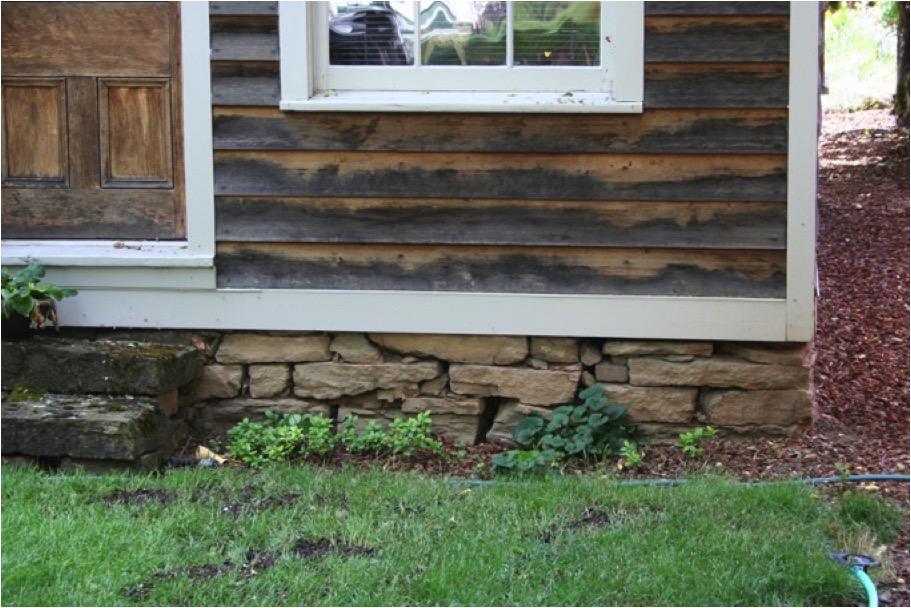
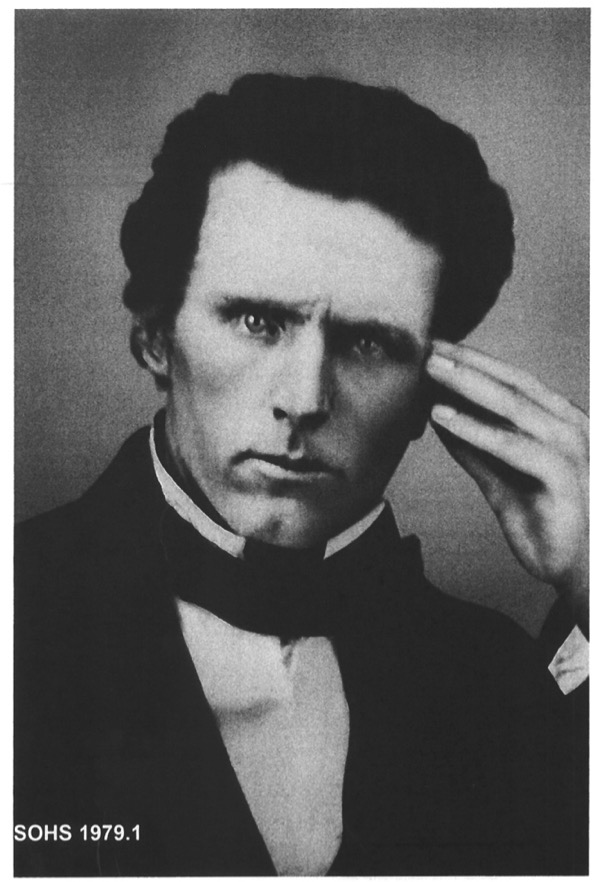
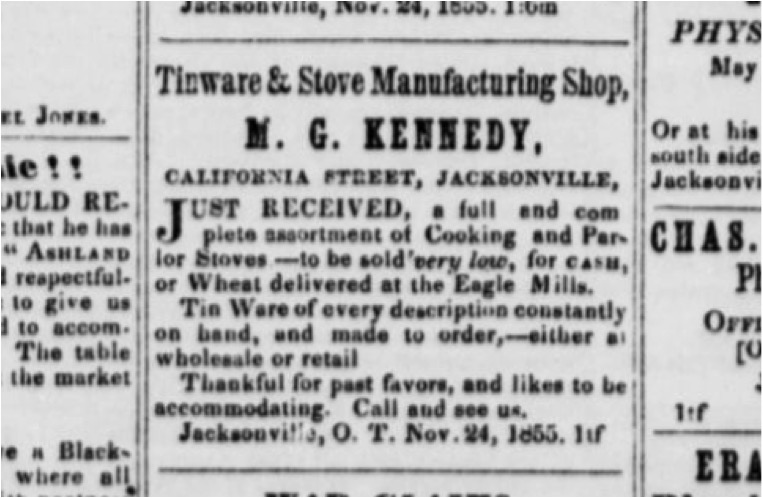 Table Rock Sentinel, May 24, 1856
Table Rock Sentinel, May 24, 1856